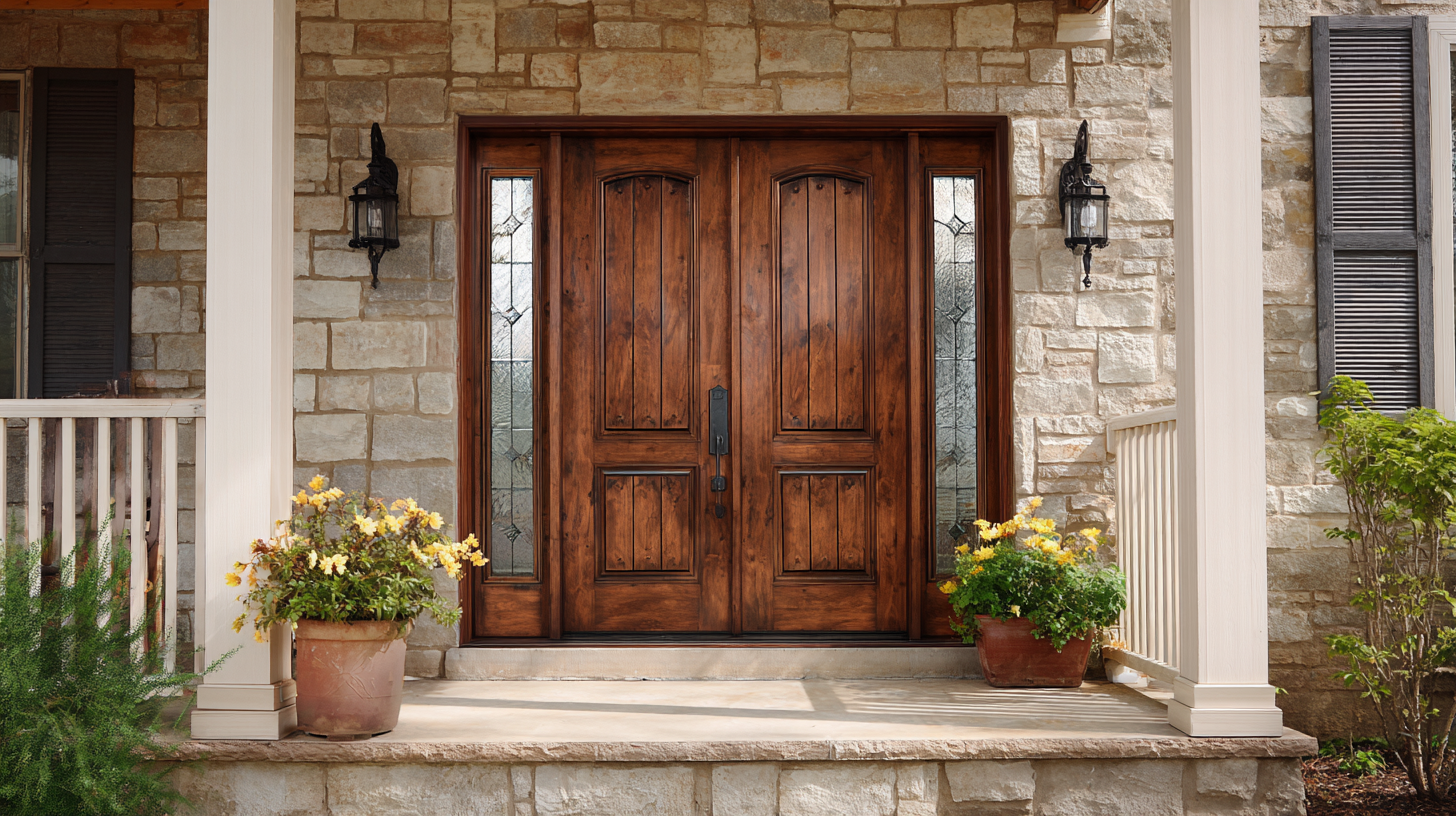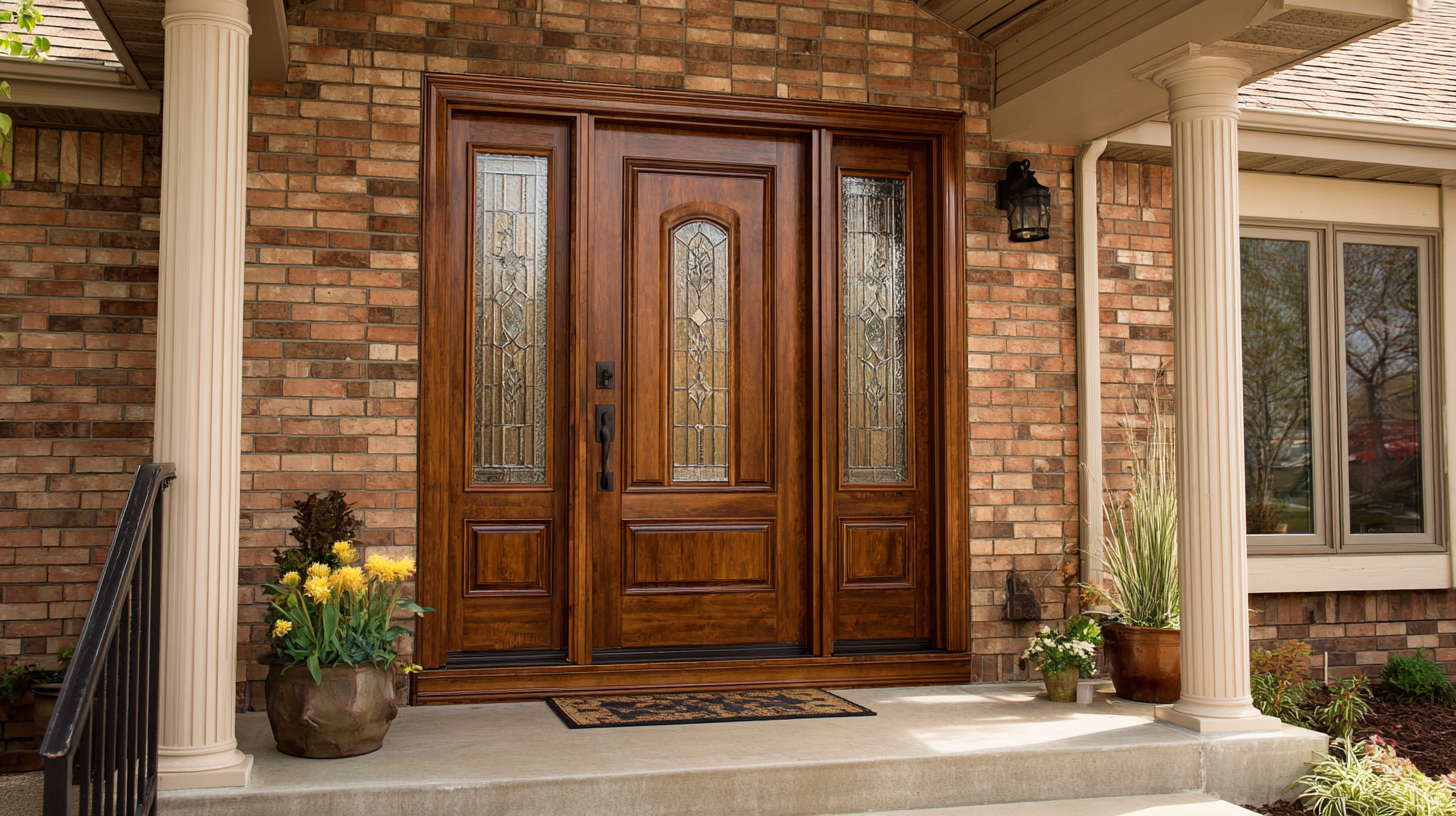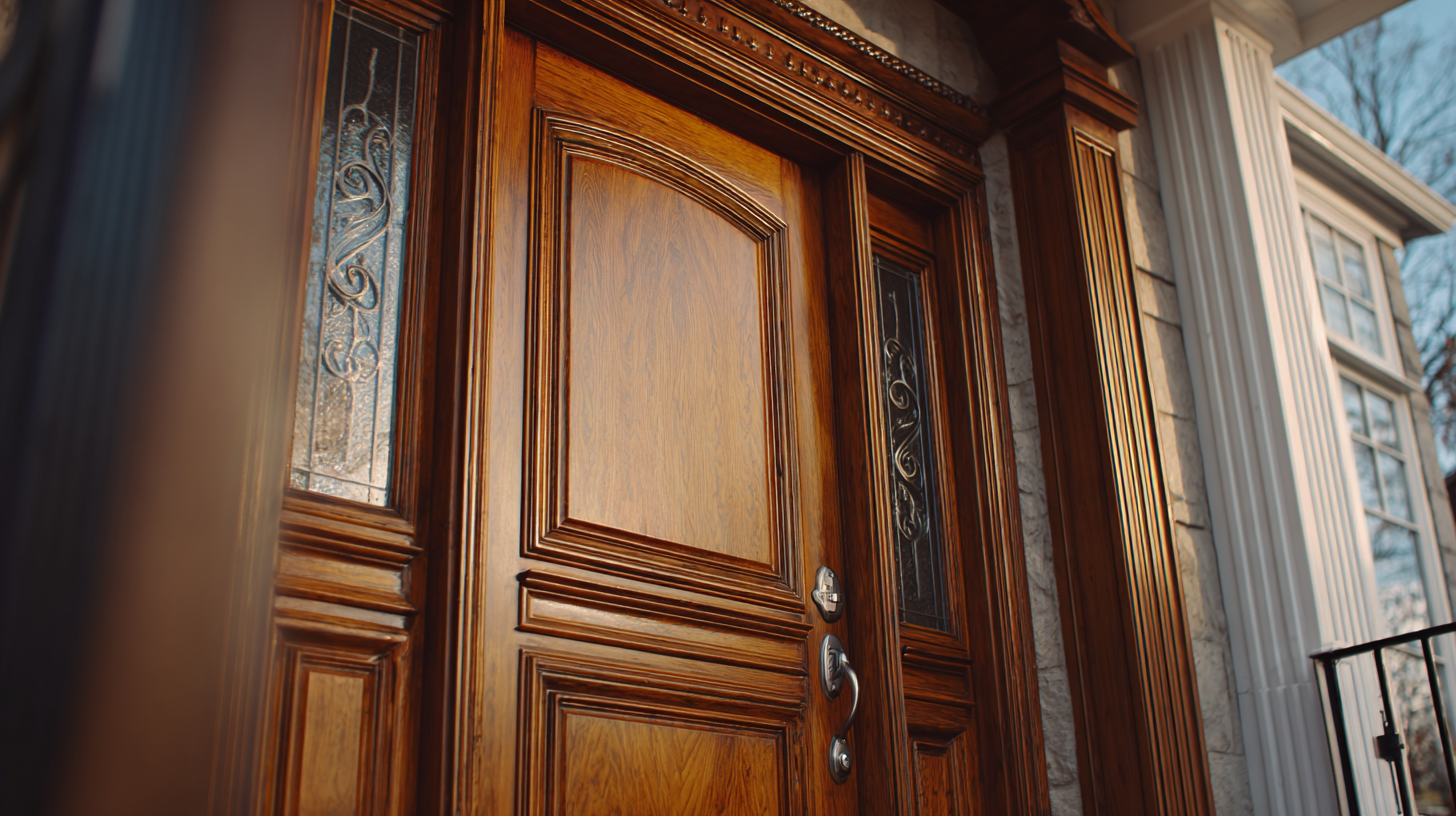Blog
Exploring the Industry Standards Behind the Best Fiberglass Wood Look Front Doors
As homeowners increasingly seek the perfect blend of aesthetics and functionality, fiberglass wood look front doors have emerged as a leading choice in the door industry. Recent market analyses reveal that the global fiberglass door market is projected to reach $3.6 billion by 2026, driven largely by the appeal of their realistic wood appearance combined with superior durability and energy efficiency. These doors not only offer the classic elegance of traditional wood but are also resistant to warping, cracking, and fading, making them a practical option for modern homes.

Industry experts emphasize that the rise in demand for fiberglass wood look front doors reflects a growing trend towards low-maintenance yet aesthetically pleasing entryways, highlighting their significance in current architectural standards and homeowner preferences. As we delve into the standards that differentiate the best products in this category, it becomes essential to understand the key factors influencing design, longevity, and overall performance.
The Rise of Fiberglass Front Doors: A Shift in Industry Standards
The rise of fiberglass front doors represents a significant shift in industry standards, reflecting a growing preference for materials that blend aesthetics, durability, and energy efficiency. As the global fiberglass doors market is projected to soar from $13.6 billion in 2022 to an impressive $33.0 billion by 2032, with a compound annual growth rate (CAGR) of 9.1%, it’s clear that homeowners and builders are increasingly recognizing the value these doors offer. Fiberglass allows for intricate wood-like designs while providing the advantages of superior insulation and resistance to weather-related wear and tear.

When considering fiberglass doors, it's essential to keep a few tips in mind. First, always check the energy efficiency ratings of the door, as this impacts long-term savings on heating and cooling. Additionally, consider the maintenance requirements; fiberglass doors typically require less upkeep than traditional wood doors, making them a convenient choice. Lastly, don’t overlook the importance of customization. Many manufacturers allow you to choose finishes and designs that fit your home's aesthetic, ensuring that your door not only performs well but also enhances your entryway’s visual appeal.
Key Benefits of Fiberglass vs. Traditional Wood Doors in Modern Homes
When it comes to choosing front doors for modern homes, fiberglass has emerged as a superior option compared to traditional wood. According to a report by the American Institute of Architects, over 75% of homeowners prefer fiberglass doors due to their durability and low maintenance. Fiberglass doors resist warping, cracking, and splitting, which are common issues with wooden doors, particularly in regions with extreme weather conditions. This resilience not only enhances the longevity of the door but also ensures homeowners spend less on repairs over time.
Furthermore, energy efficiency is a significant benefit of fiberglass doors highlighted by the U.S. Department of Energy. Fiberglass doors typically have better insulation properties than wood, reducing energy consumption and lowering utility bills. Studies show that homes with fiberglass doors can save up to 30% on heating and cooling costs, making them an eco-friendly choice. As homeowners increasingly prioritize sustainability, the choice of fiberglass doors aligns with contemporary green building standards, offering both aesthetic appeal and practical advantages without compromising the environment.
Exploring the Industry Standards Behind the Best Fiberglass Wood Look Front Doors
| Feature | Fiberglass Doors | Traditional Wood Doors |
|---|---|---|
| Durability | Highly resistant to warping, cracking, and rotting | Prone to warping and rotting over time |
| Maintenance | Low maintenance; occasional cleaning | Requires regular painting, sealing, and repairs |
| Energy Efficiency | Excellent insulation properties | Moderate insulation; can allow drafts |
| Aesthetics | Available in various finishes and wood-like appearances | Natural beauty but may require refinishing |
| Cost | Generally cost-effective over time due to lower maintenance | Higher upfront costs, but may incur additional long-term expenses |
Durability and Maintenance: How Fiberglass Doors Outperform Alternatives
 Fiberglass doors have gained popularity in recent years, particularly for their durability and low maintenance compared to traditional wood or steel options. Unlike wood, which can warp, crack, or rot over time, fiberglass is engineered to withstand harsh weather conditions while maintaining its attractive appearance. This is especially important for front doors, where both aesthetics and functionality play a critical role in a home’s curb appeal.
Fiberglass doors have gained popularity in recent years, particularly for their durability and low maintenance compared to traditional wood or steel options. Unlike wood, which can warp, crack, or rot over time, fiberglass is engineered to withstand harsh weather conditions while maintaining its attractive appearance. This is especially important for front doors, where both aesthetics and functionality play a critical role in a home’s curb appeal.
When considering a fiberglass door, it's crucial to select one that comes with high-quality insulation properties to enhance energy efficiency. Not only do well-insulated doors improve comfort by regulating indoor temperatures, but they also help lower energy bills. For long-lasting performance, regular cleaning with a mild detergent is recommended, ensuring that dirt and grime do not compromise the finish.
Tip: To keep your fiberglass door looking like new, apply a coat of automotive wax every six months. This will help protect the surface and shine while preventing fading from UV exposure. Also, consider installing a storm door for additional protection against the elements, further extending the lifespan of your primary entryway. With the right care, fiberglass doors can outperform many alternatives, offering a resilient and stylish solution for homeowners.
Energy Efficiency Standards: A Comparison of Fiberglass and Wood Door Performance
When comparing fiberglass and wood doors, energy efficiency emerges as a key factor for homeowners. According to the U.S. Department of Energy, fiberglass doors typically exhibit a lower U-factor than wood doors, which means they are better at preventing heat transfer. A fiberglass door can have an R-value ranging from 5 to 9, while traditional wood doors tend to have an R-value of about 3. This difference can significantly impact heating and cooling costs over the lifespan of the door.
Tips for maximizing energy efficiency when choosing between these door types include considering the door's insulation properties and its airtightness. Look for fiberglass doors that have been tested for energy efficiency by organizations like ENERGY STAR, as these doors meet high-performance standards designed to keep your home comfortable and reduce energy bills. Additionally, pay attention to the door’s framing and installation, as poor sealing around the frame can negate the benefits of an efficient door.
Another aspect to consider is the door's maintenance. Fiberglass doors require less upkeep compared to wood, as they are resistant to warping, cracking, and fading. This longevity contributes to their energy efficiency since they maintain their insulating properties better over time. When assessing durability, choose doors backed by manufacturers that offer warranties, indicating confidence in their product’s performance.
Aesthetic Appeal: Matching the Look of Wood with the Benefits of Fiberglass
When it comes to enhancing the aesthetic appeal of your home, few features are as impactful as the front door. Fiberglass wood look front doors offer an innovative solution that combines the timeless charm of natural wood with the durability and versatility of fiberglass. This fusion provides homeowners with a beautiful entrance without the constant upkeep that traditional wood requires. It's a perfect choice for those who crave the classic aesthetic while prioritizing practicality and longevity.
Additionally, the technology behind fiberglass doors has advanced significantly, allowing them to mimic the intricate textures and colors of real wood closely. From oak to mahogany finishes, homeowners can select a style that best complements their home’s architectural design. With superior insulation properties, these doors not only enhance visual appeal but also contribute to energy efficiency, helping to keep homes comfortable in varying weather conditions. Overall, the best fiberglass wood look front doors seamlessly blend beauty and function, making them a standout choice for modern homeowners.
